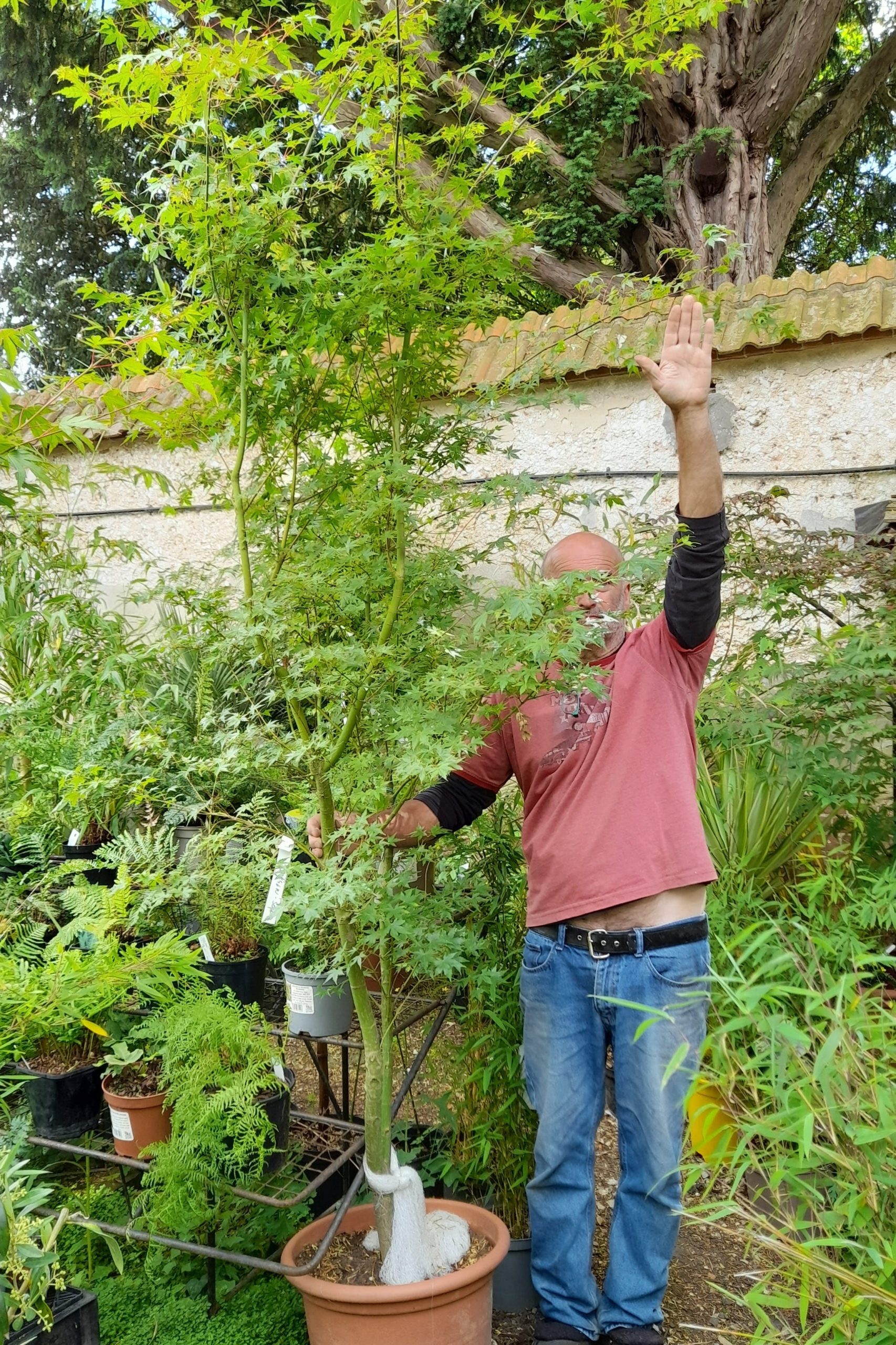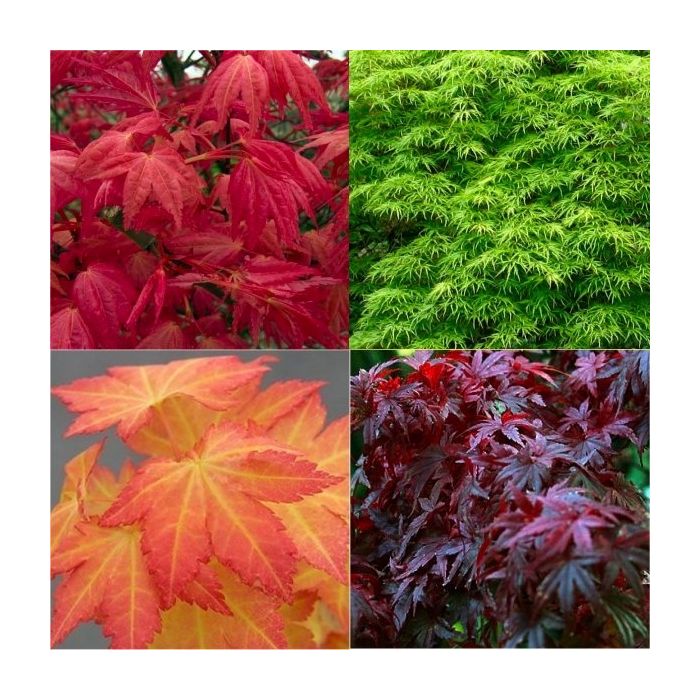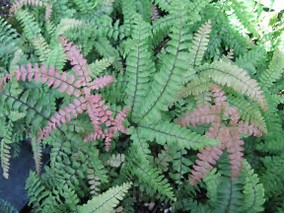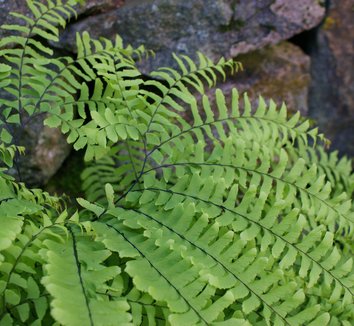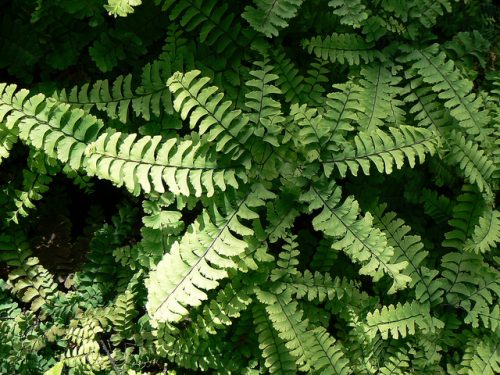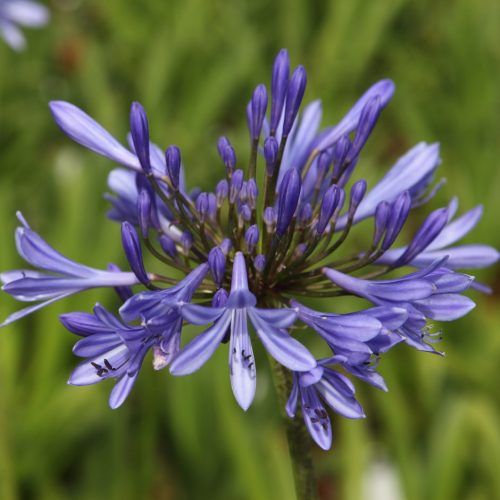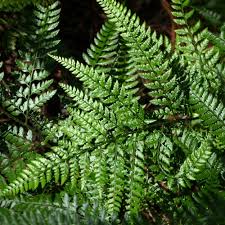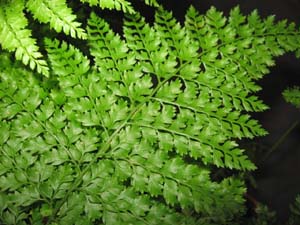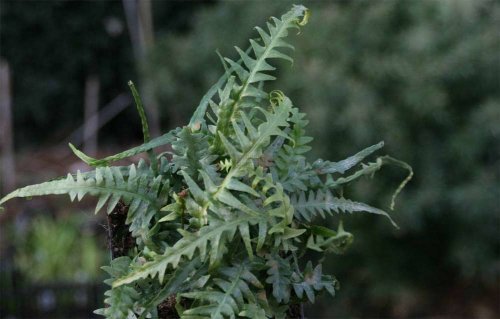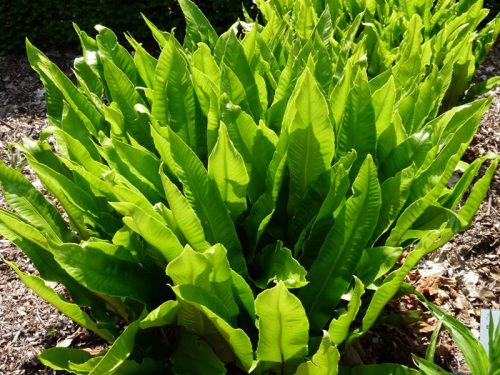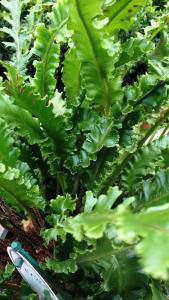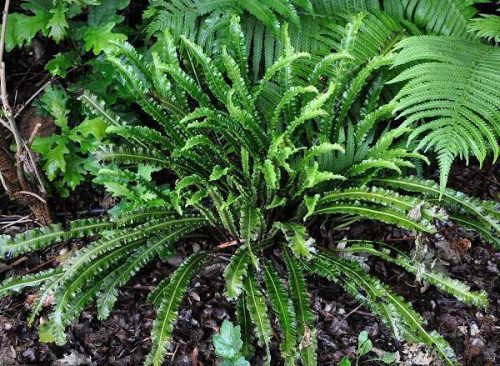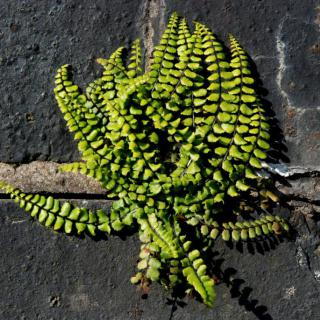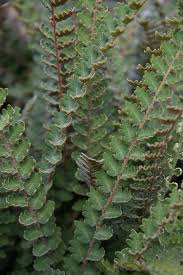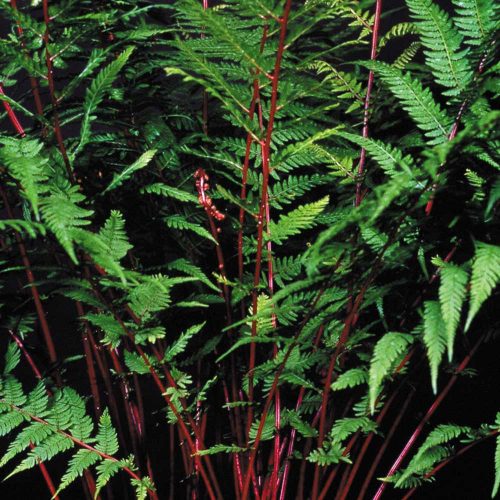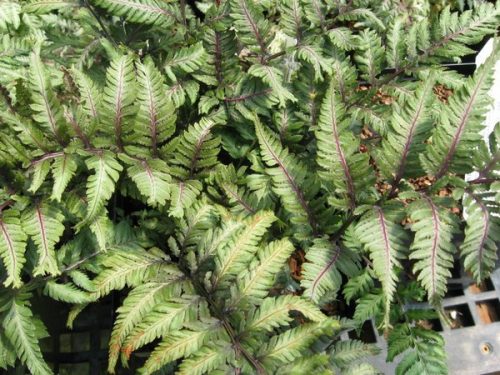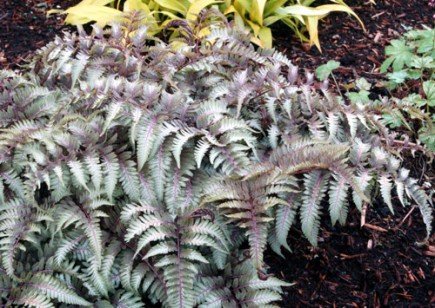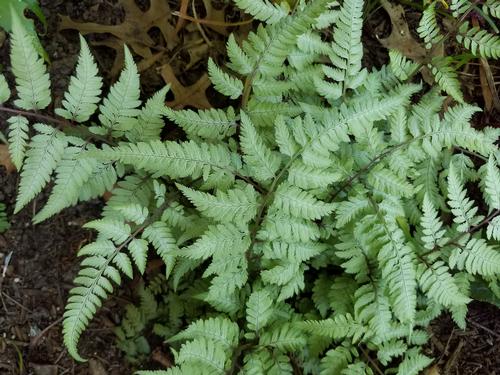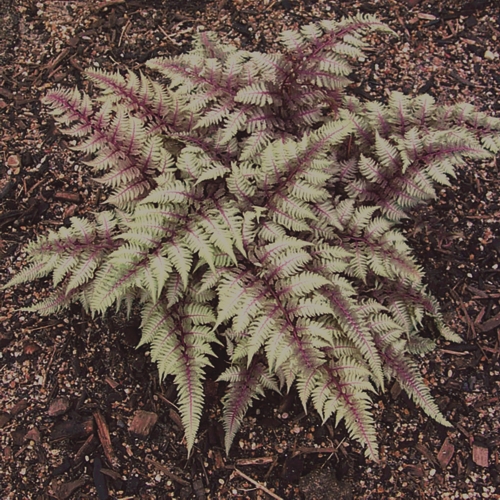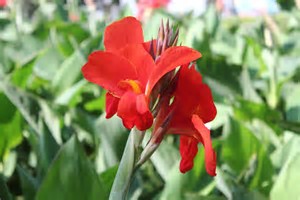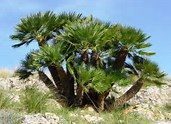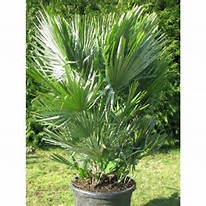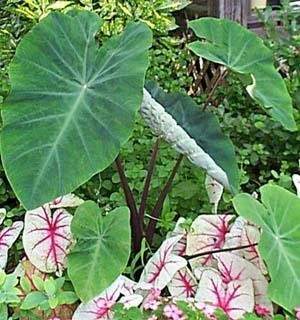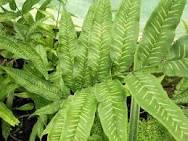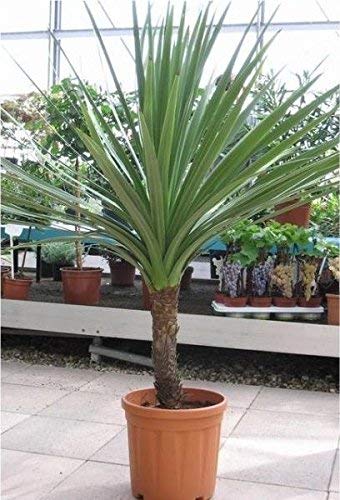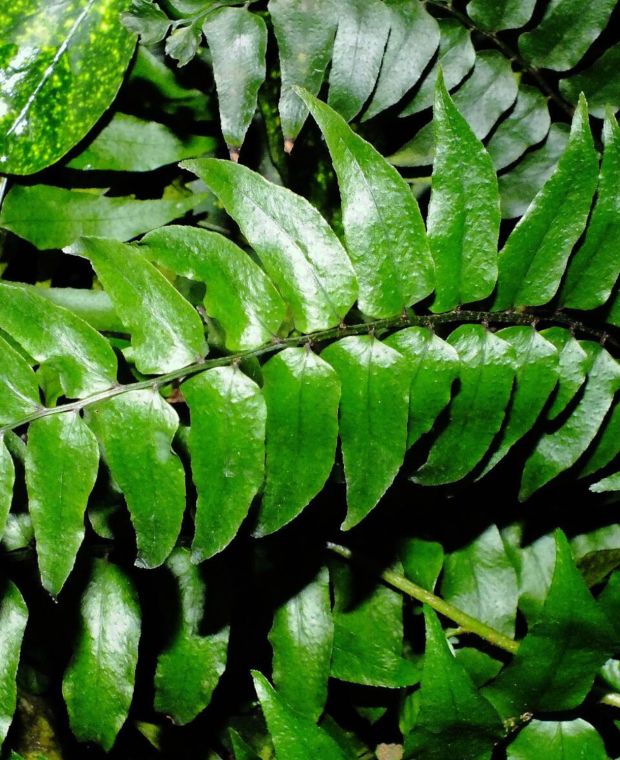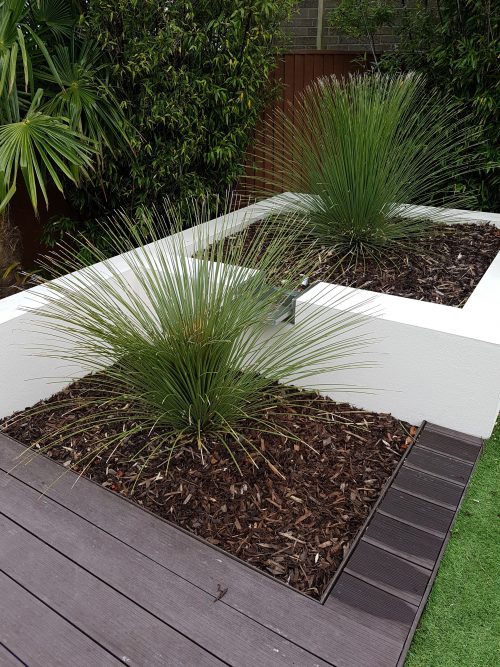-
 Adiantum aleuticum is very similar to A. pedatum but noticeably different when compared together. Adiantum aleuticum is native to the western half of North America and East Asia. It is a very hardy fern, and, despite its delicate appearance, very tough. 'Imbricatum' is a dwarf selection with green to blue-green foliage and purple wiry rachis. This variety forms a dense clump and is very easy to establish in good humus-rich, moist soil in shade.
Adiantum aleuticum is very similar to A. pedatum but noticeably different when compared together. Adiantum aleuticum is native to the western half of North America and East Asia. It is a very hardy fern, and, despite its delicate appearance, very tough. 'Imbricatum' is a dwarf selection with green to blue-green foliage and purple wiry rachis. This variety forms a dense clump and is very easy to establish in good humus-rich, moist soil in shade. -
Out of stock
 Adiantum can be deciduous or evergreen ferns with shiny black stalks bearing simple or more usually pinnately divided fronds, the segments fan-shaped, oblong or rounded, carrying spores under reflexed marginal flaps
Adiantum can be deciduous or evergreen ferns with shiny black stalks bearing simple or more usually pinnately divided fronds, the segments fan-shaped, oblong or rounded, carrying spores under reflexed marginal flaps -

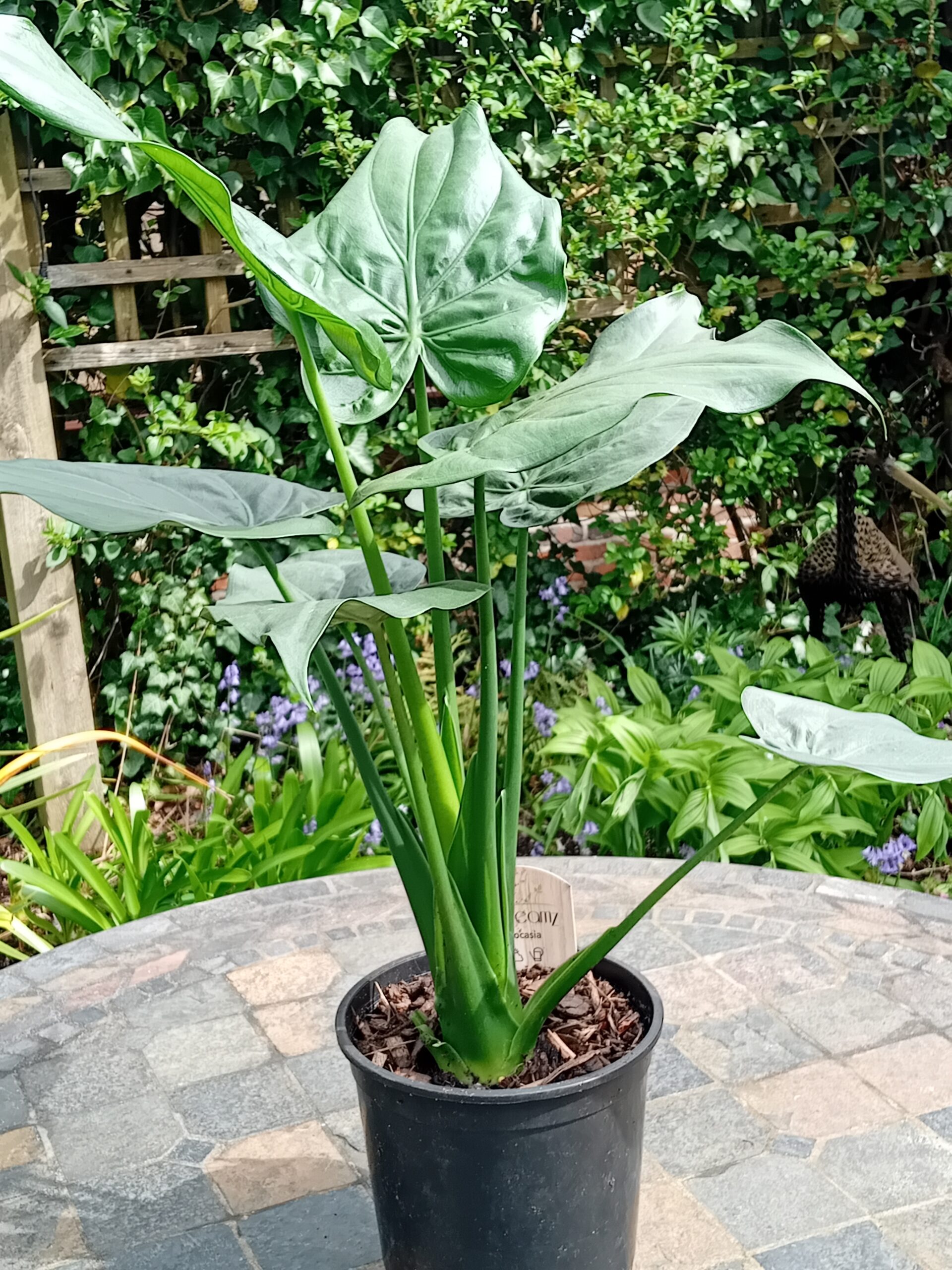 These alocasias have dark green, arrow leaves and are significantly easier to look after than some of their family. Their thick woody trunks enable them to store water for longer periods of time, making them fairly drought tolerant. Likes light areas but not in direct sunlight. Water regularly but not too much, let the top soil dry out before watering, they do not like to be overwatered.
These alocasias have dark green, arrow leaves and are significantly easier to look after than some of their family. Their thick woody trunks enable them to store water for longer periods of time, making them fairly drought tolerant. Likes light areas but not in direct sunlight. Water regularly but not too much, let the top soil dry out before watering, they do not like to be overwatered. -
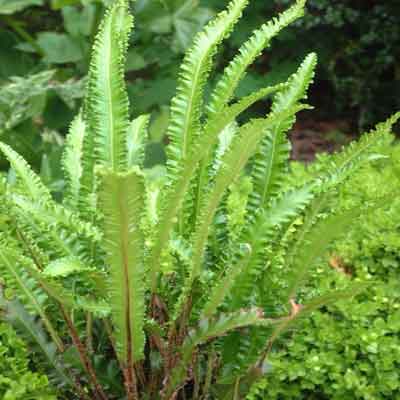 The Narrow Hart's Tongue fern differs from the plain species, unsurprisingly, by having narrower leaves but also with an undulating margin giving an extremely attractive rippling effect to the plant as a whole. It is also a touch smaller than the species when mature, tolerant and a must for fern collectors.
The Narrow Hart's Tongue fern differs from the plain species, unsurprisingly, by having narrower leaves but also with an undulating margin giving an extremely attractive rippling effect to the plant as a whole. It is also a touch smaller than the species when mature, tolerant and a must for fern collectors. -
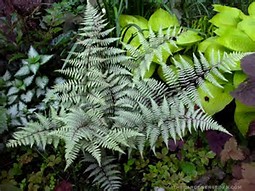 From the garden of Virginia's Nancy Swell comes this stunning lady fern with silver-white fronds and a decidedly upright habit. Leaves age to light green with new fronds appearing throughout the season. Upright with a beautiful formal appearance that really stands out in the shady garden. This fern really prefers shade and will stand up with all fronds perpendicular to the ground in full sun.
From the garden of Virginia's Nancy Swell comes this stunning lady fern with silver-white fronds and a decidedly upright habit. Leaves age to light green with new fronds appearing throughout the season. Upright with a beautiful formal appearance that really stands out in the shady garden. This fern really prefers shade and will stand up with all fronds perpendicular to the ground in full sun. -
 From Brazil, one of the hardiest feather palms, Butia will withstand -10 or -12C when larger. Beautiful blue-green leaves, strongly recurved, make it instantly recognisable. An essential palm for the exotic garden. Tolerant of the weather in high rainfall regions. Also wonderful as a conservatory palm, or even indoors if the light is bright enough. Ultimately it can grow to about 10 or 20 feet, though this will take some years
From Brazil, one of the hardiest feather palms, Butia will withstand -10 or -12C when larger. Beautiful blue-green leaves, strongly recurved, make it instantly recognisable. An essential palm for the exotic garden. Tolerant of the weather in high rainfall regions. Also wonderful as a conservatory palm, or even indoors if the light is bright enough. Ultimately it can grow to about 10 or 20 feet, though this will take some years -
Out of stock
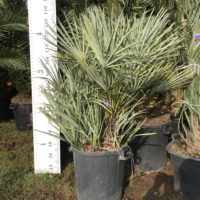 The hardiest Chamaerops, can withstand severe cold for prolonged periods. This beautiful slow growing silver blue Chamaerops adapts well to the UK climate.
The hardiest Chamaerops, can withstand severe cold for prolonged periods. This beautiful slow growing silver blue Chamaerops adapts well to the UK climate. -
 In the wild Cycas revoluta is restricted to a few of the islands of the Japanese archipelago but, worldwide, it is the most commonly cultivated cycad. This is due to its ease of culture and ability to withstand a wide range of conditions. In appearance it is the archetypical cycad forming, in time, a tall rough trunk and with crown of glossy deep green leaves at the top and often surrounded by offsets. Indoors it is best grown in a bright position or conservatory. The Sago Palm is also one of the few cycads worth trying outdoors in a milder garden,
In the wild Cycas revoluta is restricted to a few of the islands of the Japanese archipelago but, worldwide, it is the most commonly cultivated cycad. This is due to its ease of culture and ability to withstand a wide range of conditions. In appearance it is the archetypical cycad forming, in time, a tall rough trunk and with crown of glossy deep green leaves at the top and often surrounded by offsets. Indoors it is best grown in a bright position or conservatory. The Sago Palm is also one of the few cycads worth trying outdoors in a milder garden, -
 Can also be referred to as Nolina longifolia, it is a trunk-forming species which with age becomes multi-stemmed, with each trunk reaching up to 3m in height which is topped off with a head of strap-like foliage. Plant in full sun/part shady, frost hardy, keep on dry side, tolerates to -6°C or lower
Can also be referred to as Nolina longifolia, it is a trunk-forming species which with age becomes multi-stemmed, with each trunk reaching up to 3m in height which is topped off with a head of strap-like foliage. Plant in full sun/part shady, frost hardy, keep on dry side, tolerates to -6°C or lower -

 Dasylirion quadrangulatum is the correct name for a plant long known as Dasylirion longissimum. It is a succulent plant related to Yucca and Agave that slowly grows a thick, beautifully scarred trunk from which erupts a tufted head of narrow, rigid, 4-angled green leaves, each with a slightly withered tip, reminiscent of a fibre-optic lamp.
Dasylirion quadrangulatum is the correct name for a plant long known as Dasylirion longissimum. It is a succulent plant related to Yucca and Agave that slowly grows a thick, beautifully scarred trunk from which erupts a tufted head of narrow, rigid, 4-angled green leaves, each with a slightly withered tip, reminiscent of a fibre-optic lamp. -
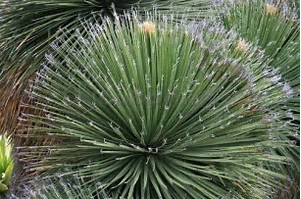 Dasylirion serratifolium is a species of Sotol from southern Mexico. However, in cultivation it is more of a 'catch-all' name for a mixed group of hybrids that have green leaves with toothed margins and terminal tufts. For all practical purposes this is unimportant to anyone other than a dasylirion specialist - in the garden they make a stunning focal point for the arid border along with Yucca, Nolina, Agave and Chamaerops with their fine-leafed 'fibre-optic lamp' appearance that contrasts well with other spiky plants. Alternatively their shape is perfect for pot culture, when they can be taken under glass for winter.
Dasylirion serratifolium is a species of Sotol from southern Mexico. However, in cultivation it is more of a 'catch-all' name for a mixed group of hybrids that have green leaves with toothed margins and terminal tufts. For all practical purposes this is unimportant to anyone other than a dasylirion specialist - in the garden they make a stunning focal point for the arid border along with Yucca, Nolina, Agave and Chamaerops with their fine-leafed 'fibre-optic lamp' appearance that contrasts well with other spiky plants. Alternatively their shape is perfect for pot culture, when they can be taken under glass for winter.

